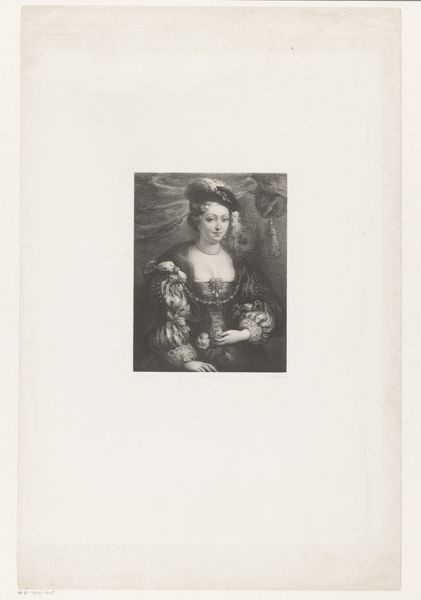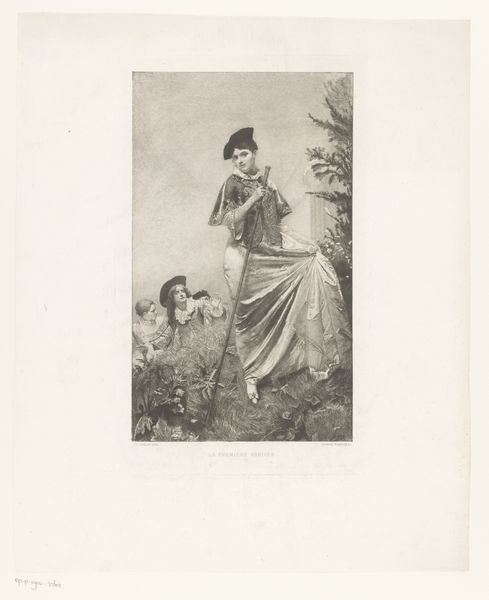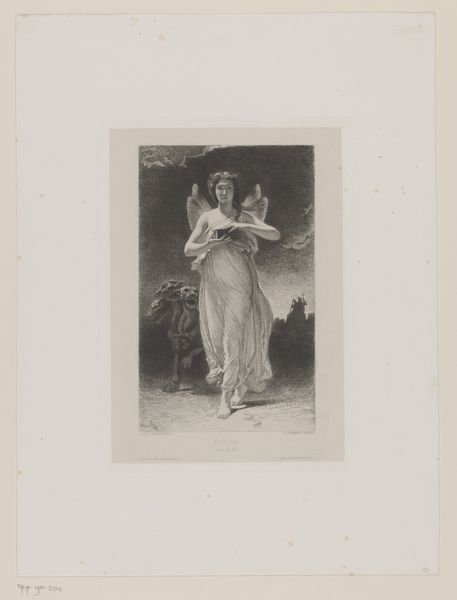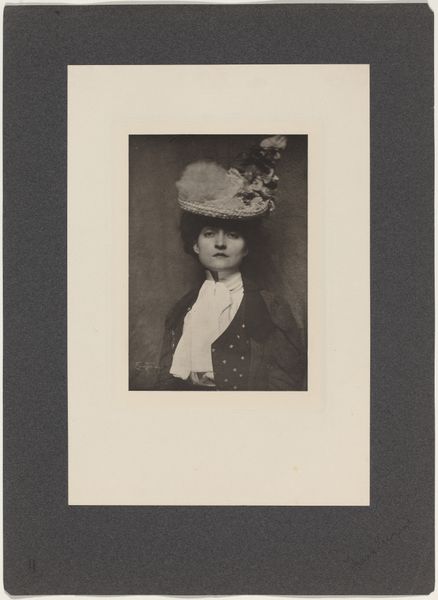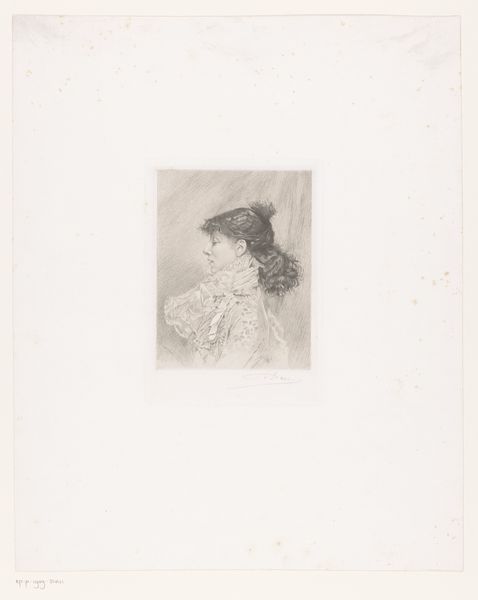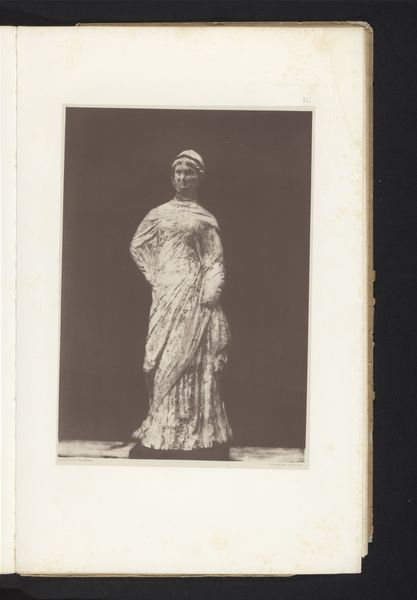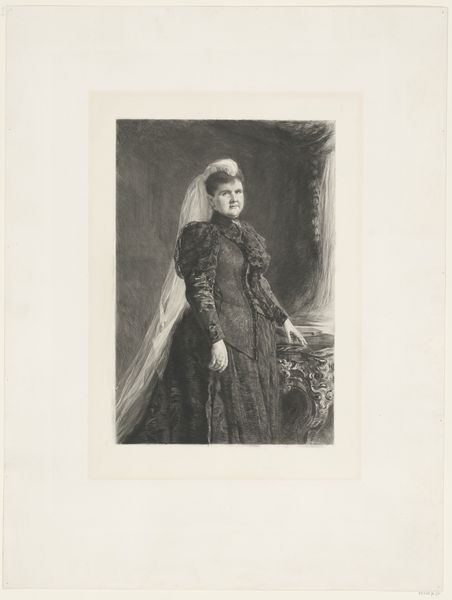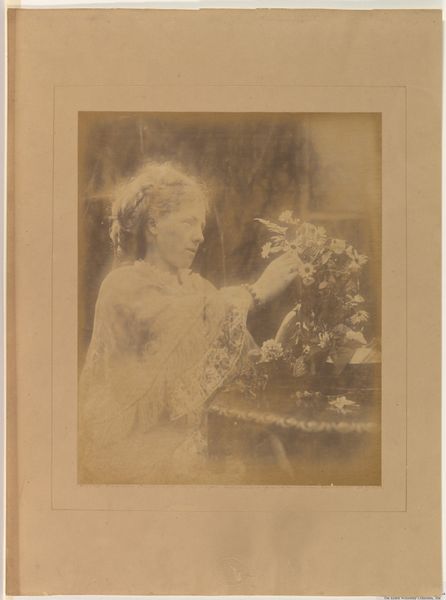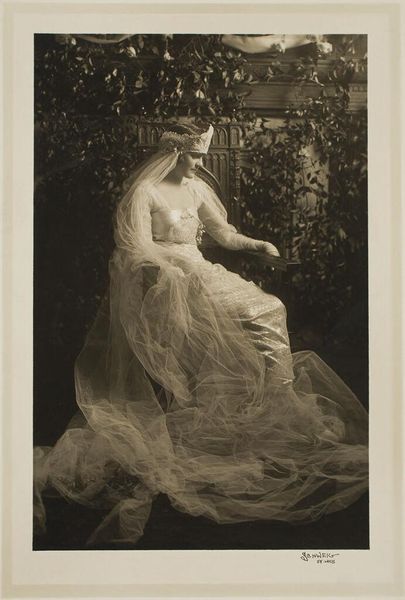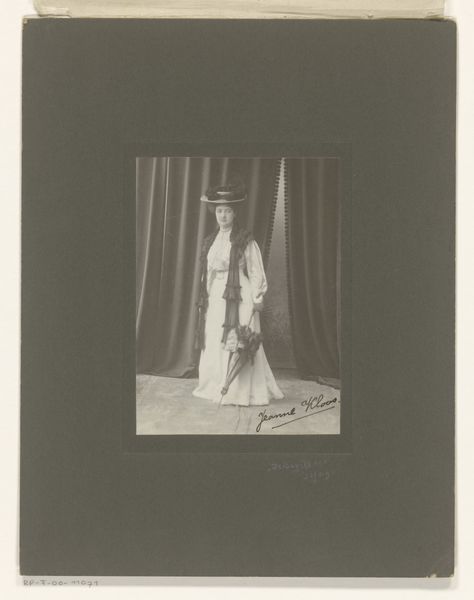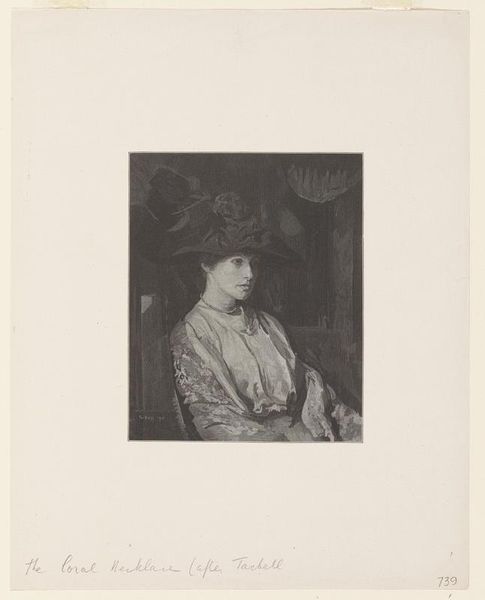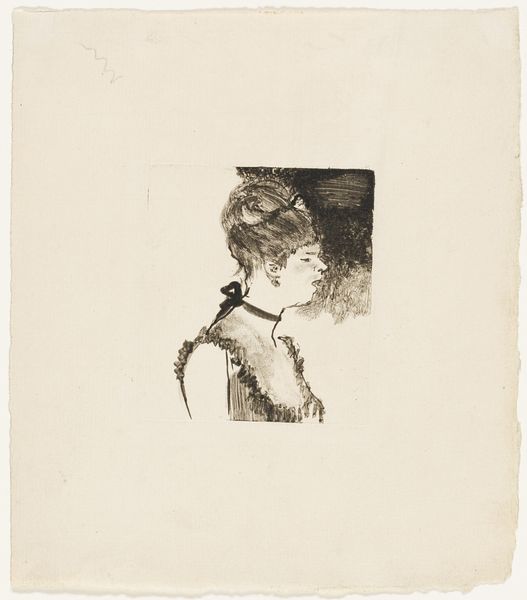
Dimensions: height 353 mm, width 252 mm
Copyright: Rijks Museum: Open Domain
Curator: Looking at Samuel Okey’s engraving and etching after Francis Cotes, “Portret van Nelly O’Brien,” dating roughly from 1765 to 1780, I'm immediately struck by a sense of refined tranquility. What’s your take? Editor: Well, it definitely has a Rococo sensibility, with its emphasis on ornamentation, lightness, and intimate scenes. However, it also invites us to consider the social politics of the era, particularly concerning women. We’re looking at an era defined by figures such as Marie Antoinette, when fashion played a powerful role for women, particularly as related to notions of status, identity and visual culture. What do we make of this carefully staged and composed portrait? Curator: It does feel composed. It reminds me of a carefully curated still life, with Miss O'Brien and her darling dog almost props amidst this symphony of lace and frills. You get the feeling this is meant to project an air of untouchable elegance, and isn't that hat simply divine? A garden on her head. Editor: It's precisely this "untouchable elegance" that interests me. How much agency did Nelly O'Brien, as the subject, have in crafting this image? These portraits often functioned as carefully constructed representations intended to navigate societal expectations of beauty, virtue, and social standing for the wealthy women represented. She is not necessarily offering us a candid insight into her inner self, so much as working to maintain or elevate a specific vision of her outward self. The performance, so to speak. Curator: That's a sobering point. Yet, within this artifice, I still perceive a genuine connection between Nelly and her fluffy companion. It feels like a tender refuge within the constructed image. Editor: Yes, and the act of cradling the small dog almost domesticates the scene, doesn’t it? This small flourish invites contemplation of themes that resonate to our world, offering new insights regarding class, privilege and femininity. I leave you with a reminder to actively question and broaden our perspectives. Curator: Nicely said. It just shows how, centuries later, even a seemingly simple portrait can invite such a complex range of interpretations, both emotional and analytical. It's that resonance, for me, that truly makes art come alive.
Comments
No comments
Be the first to comment and join the conversation on the ultimate creative platform.
